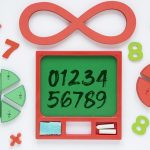Share this
Standardized tests are a part of the milestones in a student’s academic journey. These exams determine the student’s preparedness for the next educational level and are often used to measure their overall proficiency in various subjects, such as reading, writing, mathematics, and science. Standardized tests are requirement for college or university admissions in many countries. SAT or ACT is required for admission to most colleges in United States. TOEFL, IELTS, or Cambridge Test for English Proficiency is required if your child is a recent immigrant from a country where English is not an official language.
As a parent, you may naturally wonder how to provide your child with the best possible opportunities to excel in these tests. When should my child start to prepare for his or her standardized test? How should I go about it? Do I need a tutor? Should I buy textbooks or workbooks for my child? We’ll examine these common questions in this article.
First, Understand the Test Structure

(SAT Math, Credit: College Board)
Before your child begins preparing for the test, it’s essential to understand the structure and format of the exam. Each standardized test has its unique features and requirements, such as multiple-choice, essay, or short answer format. Helping your child familiarize themselves with the test structure and style will significantly impact their performance. This understanding will also enable them to manage their time efficiently during the test by allocating appropriate time to each section or question type. Additionally, be aware of when the standardized test occurs and the number of times your child is permitted to take it. This enables you and your child to devise a study plan.
What It Takes to Excel in a Standardized Test
Standardized tests typically assess a student’s understanding of a subject and their ability to think, problem-solve, and communicate. For your child to succeed in standardized tests, there are two essential components.
1. Be proficient in the subject being tested.
Your child needs to have a solid understanding of the subject being tested, including the necessary knowledge and skills. For example, in the SAT math section, they should know the relevant math concepts, memorize the formulas, and be quick and accurate with calculations.
2. Be familiar with the way questions are asked.
Every standardized test has a unique way of presenting questions. It’s not just about the question format (i.e. multiple choice or written questions); it’s about the specific ways test-makers phrase their questions. For example, the IB math test, created by a European organization called IBO, uses the word “gradient” instead of “slope” (which is used in American tests like the SAT). Your child must be comfortable with how questions are asked in the standardized test.
To become familiar wit the way questions are asked, a student will need to do mock tests or past tests of the standardized test. Based on my experience, for a standardized test like SATs, a student should do a minimum 5 to 10 mock tests to become adequately prepared.
Develop a Plan to Tackle the Standardized Test

To prepare well for a standardized test, you should create a solid plan that outlines what to study and how long to study each topic. A child should learn the necessary information for the subject area, practice with mock tests that imitate the test format, and learn the suggested test-taking strategies. A good study plan should include specific goals, a timeline, and a clear allocation of time for different subjects or topics. According to research, students who follow a study plan are more likely to meet or exceed their academic goals.
To make an effective plan, consider these questions:
- What does my child already know, and what is the difference between their current knowledge and what’s expected on the test?
- How much time should be spent studying each section or subject area?
- What methods will my child use to study the material?
- Where can I find the needed study materials, and what type of materials should be used?
- How many practice tests should my child take, and how much time should be allocated to this?
It can be difficult for parents to answer these questions unless they are educators themselves. That’s why tutors or learning centers that specialize in preparing for standardized tests can be helpful. An experienced tutor can address these questions by giving the student an assessment test or having an initial lesson with the student.
What Does Test Prep Look Like?
Subject Mastery
It’s essential to focus on building a strong foundation in the subjects the test will cover. This means your child must acquire a deep understanding and thorough knowledge of the various topics that will be tested. Understanding the material will increase their confidence during the test and improve their ability to answer questions accurately. Depending on where your child is at right now, this step may take a little time or a long time.
Get started by looking at the required knowledge of the standardized test. Then, understand what your child already knows and what your child still needs to learn. Break down the topics covered in the test into 3 types:
- Topics that your child already knows and is very comfortable with.
- Topics that your child has learned in the past but needs some review on.
- Topics that your child has not learned.
Concentrate on helping your child with the 2nd and 3rd types as described above. This can involve a combination of tutoring / reading a textbook / watching a video and letting your child do practice questions.
Practice with Mock Tests and Past Tests

It is often said that ‘practice makes perfect,’ and this is especially true when it comes to standardized tests. Research has shown that students who practice with sample questions and complete mock exams perform better in the actual test.
Mock tests are created by third-party companies or publishers to resemble standardized tests in terms of format, time constraints, question types, subject matter, and question difficulty. Meanwhile, past tests refer to actual tests administered by the organization responsible for creating the standardized tests in the past. Both types of tests serve as valuable practice resources for your child to become familiar with the types of questions they will encounter on the actual standardized test.
It is beneficial for your child to take as many practice tests as possible. However, they should only start taking these tests after they have gained the necessary knowledge and skills. When completing practice tests, consider the following guidelines:
- Ensure your child does not refer to any materials such as textbooks and only uses allowed tools (e.g., a non-scientific calculator) during the test.
- Enforce a strict time limit for the test.
- Grade the test and record the scores obtained.
- Review the solutions and understand where mistakes were made.
- Monitor the scores as your child takes more tests. If there is no improvement, it could indicate a gap in their knowledge, in which case they should revisit the relevant topics. Alternatively, it could suggest that they are not employing effective test-taking strategies. In this case, review the suggested strategies or consider ways to take the test more efficiently.
Learn Test-taking Techniques
Equip your child with effective test-taking techniques to minimize anxiety and maximize efficiency during the test. Some valuable tips include:
- Reading the instructions and questions thoroughly
- Eliminating incorrect answer choices in multiple-choice questions
- Using time management strategies to allocate sufficient time for each question
- Reviewing answers before submitting the test
- Staying focused and maintaining a positive attitude
Every standardized test varies, and as such, there are unique recommended approaches for each of them. Test preparation books often provide suggested techniques that your child can explore. Additionally, tutors and teachers who have experience in teaching standardized tests can offer valuable insights into the most effective strategies.
What Are the Test Prep Resources?
There are several test prep resources available, such as textbooks, online courses, and tutoring services, which can help your child further improve their skills and understanding. Using one or more of these resources can boost your child’s performance and confidence during standardized tests.
One-on-One Tutoring in Standardized Test Preparation

Although schools do their utmost to teach students all the necessary subjects and skills, they often lack the capacity to cater to each student’s individual needs. This is where one-on-one tutoring comes in: it offers personalized instruction based on each student’s pace, strengths, and weaknesses. The customized approach of tutoring allows students to build a strong foundation in specific subjects and hone various skills relevant to standardized tests. In general, one-on-one tutoring allows a tutor to help your child with exactly the subject area that he or she needs to study; this can help your child save time as the tutoring sessions are more efficient.
Advantages of Tutoring for Standardized Test Success
There are numerous reasons why tutoring is a powerful tool for preparing your child for standardized tests, including:
- Identifying and addressing knowledge gaps: Tutors can quickly identify and address gaps in a student’s understanding that may have gone unnoticed or unaddressed in a typical classroom setting. By filling these gaps, tutors can help students better prepare for the variety of questions they may face on standardized tests.
- Personalized learning strategies: Tutoring allows for the creation of customized study plans that address each student’s unique learning needs, helping them to learn and retain information more effectively. This personalization leads to more efficient and productive study sessions specifically tailored to standardized test prep.
- Personalized feedback: If your child is getting one-on-one help from a tutor, your child can ask questions whenever he or she needs to, and the tutor can provide individualized assistance.
- Boosting confidence and reducing stress: A tutor’s one-on-one guidance can help increase a student’s self-confidence in their abilities, alleviating test-taking anxiety. This newfound confidence is essential, as stress can significantly affect a student’s performance on standardized tests.
- Acquiring essential test-taking skills: In addition to subject material, tutors can teach students valuable test-taking strategies that contribute to success in standardized tests. These include critical thinking, time management, and multiple-choice question tactics.
- Regular practice and feedback: Tutors provide the opportunity for continuous practice using sample test questions, quizzes, and exams. This repeated exposure to test-style questions, coupled with constructive feedback, helps students identify their weaknesses and continuously improve their performance.
Choosing the Right Tutor for Your Child
Selecting the ideal tutor for your child is crucial, as this will significantly impact their learning experience and standardized test results. Here are a few factors to consider when choosing the right tutor for your child:
- Qualifications and experience: Ensure the tutor has the necessary academic qualifications, background, and experience in the subject matter your child needs help with.
- Teaching style: Observe the tutor’s method of teaching and see if it aligns well with your child’s learning style. A tutor who can adapt their style to meet your child’s needs will likely yield better results. Try out one class with the tutor. See if the tutor is a good match with your child in terms of teaching style and personality.
- Track record of success: Look for a tutor with a history of helping students achieve excellent standardized test scores. Ask for recommendations from other parents or consult online reviews.
- Tutor’s own experience with the standardized test: A tutor who has taken the same standardized test and exceled at it can often offer students better insight and tips than a tutor who has never taken the test him- or herself.
- Availability: The tutor’s schedule should align with your child’s availability, ensuring that they have access to consistent tutoring sessions during the preparation period.
- Personality: Your child should feel comfortable and at ease with their tutor, as this will facilitate open communication, engagement, and effective learning.
Group Classes for Standardized Test Preparation

A group class is a learning environment where multiple students come together to receive instruction from a teacher. In the context of standardized test preparation, group classes can help students by providing a structured curriculum, opportunities for collaborative learning, and guidance from an experienced educator. These classes can help students develop essential skills, strategies, and knowledge required for success on standardized tests.
Advantages and Disadvantages of Group Classes
- Structured curriculum: A well-designed group class will provide a clear and organized curriculum that focuses on key areas of the standardized test, ensuring that students cover all necessary topics.
- Collaborative learning: Students can learn from each other and share strategies, which can lead to a better understanding of the test material.
- Experienced educators: Teachers in group classes are usually experienced in preparing students for standardized tests and can provide valuable guidance and insights.
- Peer support: Being part of a group can help students stay motivated and focused on their test preparation.
- Affordability: Group classes tend to be more affordable than one-on-one tutoring sessions.
Disadvantages and Disadvantages of Group Classes
- Less individualized attention: In a group setting, a teacher cannot provide as much individualized attention to each student, which may hinder the progress of some learners.
- Fixed pace: The pace of the class may be too fast or too slow for some students, making it difficult for them to keep up with the material or remain engaged.
- Varying skill levels: Students in a group class may have different skill levels and learning styles, which can make it difficult for teachers to cater to everyone’s needs.
- Scheduling constraints: Group classes often have fixed schedules, which may not be convenient for every student.
- Potential distractions: A larger group of students may lead to more distractions and a less focused learning environment.
Can my child prepare for a standardized test without any tutoring or group classes?
Yes, your child can prepare for a standardized test without any tutoring or group classes. With the right resources, motivation, and self-discipline, a student can effectively study for standardized tests on their own. There are numerous test prep books, online resources, and practice tests available to help students develop their test-taking strategies and improve their content knowledge. However, the effectiveness of this approach depends on the individual student’s learning style, motivation, and ability to study independently.
The main advantage of self-study is that it allows the student to set their own pace and schedule, making it a flexible and personalized learning experience. Students can focus on their specific areas of weakness and spend more time on challenging topics. Additionally, self-study is typically more cost-effective than tutoring or group classes.
On the other hand, the self-study approach has some disadvantages. Without guidance from a tutor or instructor, students may miss out on valuable test-taking strategies or struggle to identify and address their weaknesses. An experienced tutor may be able to provide unique insights and tips that can tremendously help your child. Self-study can also be challenging for students to maintain motivation and discipline when studying independently. Furthermore, self-study may not provide the same level of social interaction and support as group classes or one-on-one tutoring, which could make the learning experience less enjoyable for some students.
Final Thoughts
Preparing for standardized tests is a critical aspect of your child’s education, and securing a knowledgeable, qualified tutor can make all the difference in their academic success. Group classes may also be a good choice for your child. Some students prepare for the test on their own, but this approach requires self-discipline and motivation. Regardless of the approach taken, a good preparation plan should include review of required topics in the subject area, mock tests, and learning test-taking techniques. Remember, the earlier you start, the more time your child will have to develop a solid foundation and gain confidence in their abilities, ensuring an outstanding performance on their standardized tests.
Richard Zhang, M.Ed., is an educator and a software developer with a Masters degree in education from University of Toronto and an immense passion for education and learning. Until the pandemic, Richard owned an award-winning learning centre in Toronto. For 15 years, he has taught and mentored hundreds of elementary, middle school, and high school students succeed in academics. He is also an app developer specializing in web and mobile application in educational and business sectors.









